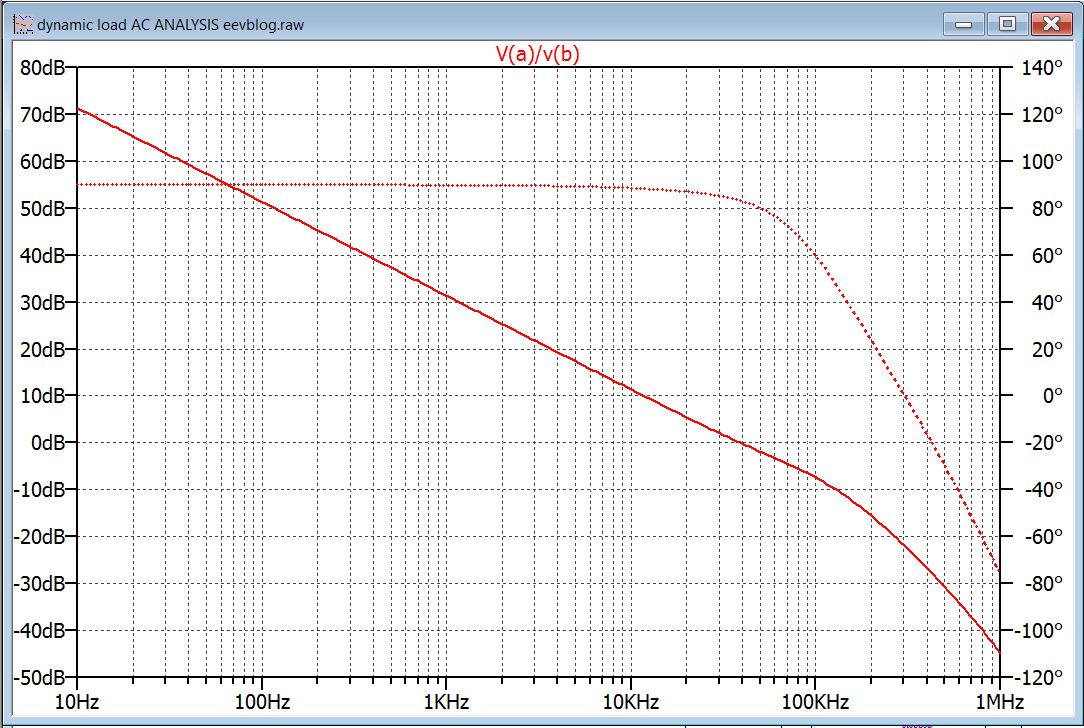I have 2 questions about OPs test setup.
- Shouldn't the test signal be injected between the inverting input and R3 instead of the point shown? For me, R3 is part of the feedback loop, so shouldn't it be "on the right side" of the injection point?
- What, precisely, is the test signal? Is it a sine wave sweep? At what amplitude?
Bonus question.
- Do you run these tests with the DUT active (in this case, V2 >0V) or with just the op-amps powered up?
Thank you for your interest in the thread.
There is no need to own a VNA to explore loop stability. You can explore this topic using LTspice.
In LTspice you can use either the transient analysis and the 'Network Analyzer or FRA' shown in the first post or you can you can use the AC analysis as demonstrated here:

The AC analysis can be used if the circuit does NOT contain a switching supply or similar components. The transient analysis method closely matches the measurements made with hardware in the lab.
The general idea is that the circuit being examined is powered up, as it would be normally, and the signal injector is placed in the control loop. The loop is still closed so the circuit will stay on the desired operating point.
This is how this works. The op-amp will maintain 0V between the inverting and the non-inverting inputs of the op-amp, U1. This means the voltage on node B should be equal in magnitude to the voltage on V2 but opposite in sign. In this case +0.1V. With the 0.1 ohm resistor, R1, the source current is 1A.
If a disturbance is applied, using V5, the op-amp will try and minimize the disturbance on node B and the disturbance signal should appear on node A. If the frequency of the disturbance is low, there is enough gain and bandwidth to achieve this. If the frequency of the disturbance is increased, the loop can not reject all the disturbance and some of the disturbance appears on node A and some on node B. The ratio of the amplitudes on nodes A and B is measurement of the circuits ability to reject the disturbance.
Since we are interested in the ratio of V(a) / V(b), the magnitude of the injection signal doesn't matter. Practically the magnitude is chosen to be a small as possible, but still allow accurate measurements to be made.
In the lab I will choose the disturbance source to be 1 or 2% of the signal amplitude. So for a 5V power supply I would use a 50 - 100mV disturbance. The HP 3577A has fantastic ability to dig the signals out of the noise.
The injection signal is a swept sine wave or a sinewave stepped in frequency.
Here are the results from LTspice:

I have attached the LTspice model.
If you don't have LTspice, you can get it here:
http://www.linear.com/designtools/software/Regards,
Jay_Diddy_B